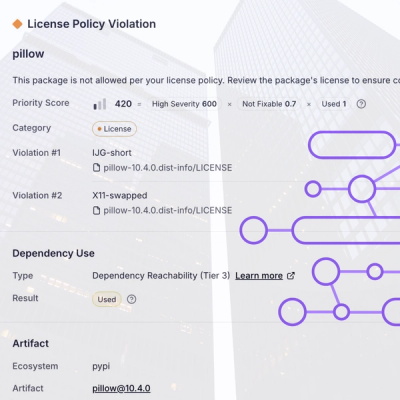
Research
/Security News
Critical Vulnerability in NestJS Devtools: Localhost RCE via Sandbox Escape
A flawed sandbox in @nestjs/devtools-integration lets attackers run code on your machine via CSRF, leading to full Remote Code Execution (RCE).
IR-SIM is an open-source, lightweight robot simulator based on Python, designed for robotics navigation, control, and learning. This simulator provides a simple and user-friendly framework for simulating robots, sensors, and environments, facilitating the development and testing of robotics algorithms with minimal hardware requirements.
Documentation: https://ir-sim.readthedocs.io/en
IR-SIM is an open-source, Python-based, lightweight robot simulator designed for navigation, control, and learning. It provides a simple, user-friendly framework with built-in collision detection for modeling robots, sensors, and environments. Ideal for academic and educational use, IR-SIM enables rapid prototyping of robotics and AI algorithms in custom scenarios with minimal coding and hardware requirements.
| Scenarios | Description |
|---|---|
| In scenarios involving multiple circular differential robots, each robot employs Reciprocal Velocity Obstacle (RVO) behavior to avoid collisions. See Usage - collision avoidance | |
| A car-like robot controlled via keyboard navigates a binary map using a 2D LiDAR sensor to detect obstacles. See Usage - grid map | |
| A car-like robot controlled via keyboard navigates a grid map generated from 3D habitat spaces datasets like HM3D, MatterPort3D, Gibson, etc. See Usage - grid map hm3d | |
| Each robot employing RVO behavior is equipped with a field of view (FOV) to detect other robots within this area. See Usage - fov | |
| A car-like robot navigates through the randomly generated and moving obstacles. See Usage - dynamic random obstacles |
pip install ir-sim
This does not include dependencies for all features of the simulator. To install additional optional dependencies, use the following pip commands:
# install dependencies for keyboard control
pip install ir-sim[keyboard]
# install dependencies for testing
pip install ir-sim[test]
# install all optional dependencies
pip install ir-sim[all]
git clone https://github.com/hanruihua/ir-sim.git
cd ir-sim
pip install -e .
import irsim
env = irsim.make('robot_world.yaml') # initialize the environment with the configuration file
for i in range(300): # run the simulation for 300 steps
env.step() # update the environment
env.render() # render the environment
if env.done(): break # check if the simulation is done
env.end() # close the environment
YAML Configuration: robot_world.yaml
world:
height: 10 # the height of the world
width: 10 # the width of the world
step_time: 0.1 # 10Hz calculate each step
sample_time: 0.1 # 10 Hz for render and data extraction
offset: [0, 0] # the offset of the world on x and y
robot:
kinematics: {name: 'diff'} # omni, diff, acker
shape: {name: 'circle', radius: 0.2} # radius
state: [1, 1, 0] # x, y, theta
goal: [9, 9, 0] # x, y, theta
behavior: {name: 'dash'} # move toward to the goal directly
color: 'g' # green
The advanced usages are listed in the irsim/usage
Currently, the simulator supports the following features. Further features, such as additional sensors, behaviors, and robot models, are under development.
| Category | Features |
|---|---|
| Kinematics | Differential Drive mobile Robot Omni-Directional mobile Robot Ackermann Steering mobile Robot |
| Sensors | 2D LiDAR FOV detector |
| Geometries | Circle Rectangle Polygon linestring Binary Grid Map |
| Behaviors | dash (Move directly toward the goal) rvo (Move toward the goal using Reciprocal Velocity Obstacle behavior) |
Academic Projects:
Deep Reinforcement Learning Projects:
This project is under development. I appreciate and welcome all contributions. Just open an issue or a pull request. Here are some simple ways to start contributing:
Code style: black
FAQs
IR-SIM is an open-source, lightweight robot simulator based on Python, designed for robotics navigation, control, and learning. This simulator provides a simple and user-friendly framework for simulating robots, sensors, and environments, facilitating the development and testing of robotics algorithms with minimal hardware requirements.
We found that ir-sim demonstrated a healthy version release cadence and project activity because the last version was released less than a year ago. It has 1 open source maintainer collaborating on the project.
Did you know?

Socket for GitHub automatically highlights issues in each pull request and monitors the health of all your open source dependencies. Discover the contents of your packages and block harmful activity before you install or update your dependencies.

Research
/Security News
A flawed sandbox in @nestjs/devtools-integration lets attackers run code on your machine via CSRF, leading to full Remote Code Execution (RCE).

Product
Customize license detection with Socket’s new license overlays: gain control, reduce noise, and handle edge cases with precision.

Product
Socket now supports Rust and Cargo, offering package search for all users and experimental SBOM generation for enterprise projects.